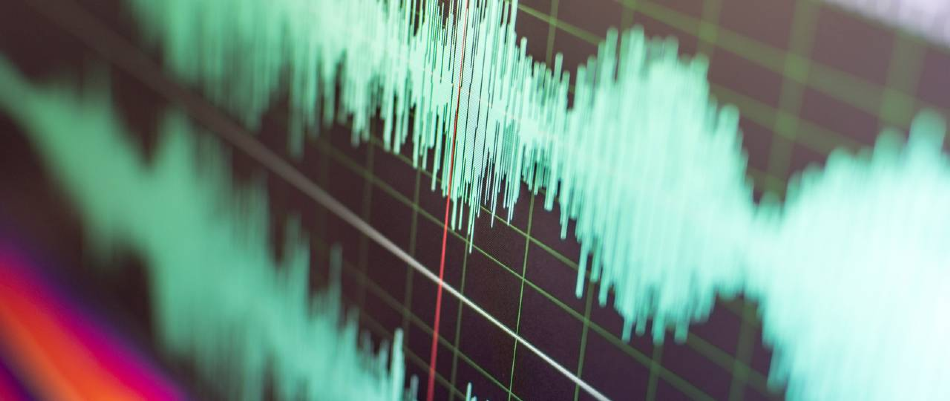Mar 9 2020
All that is required to ascertain the position of walls and similar flat surfaces inside a room are a drone, a loudspeaker, and four microphones.
 Can drones detect walls and flat surfaces using sound waves? Image Credit: iStock/mrtom-uk.
Can drones detect walls and flat surfaces using sound waves? Image Credit: iStock/mrtom-uk.
This concept has been mathematically confirmed by Professor Gregor Kemper from the Technical University of Munich and Professor Mireille Boutin from Purdue University based in Indiana, United States.
Can sound waves be used to recognize flat surfaces and walls? For quite some time, mathematicians have been analyzing this question from a theoretical perspective.
“The basic scenario is a room with flat walls, and maybe a ceiling and a floor,” explained Professor Gregor Kemper of the Chair of Algorithmic Algebra at the Technical University of Munich. The room is not believed to be rectangular. The slope of the walls could also be measured. The room contains a loudspeaker and several microphones.
Speaker and Microphones are Placed on a Drone
Studies conducted in the past have already mathematically confirmed that a single loudspeaker and four microphones are more than enough to pinpoint the walls and determine their inclination. To do this, the microphones had to be brought inside the room at haphazard positions, but this task requires a considerable amount of time and, in certain circumstances, can be completely impossible.
This made Kemper and Boutin take the concept one step further. In their theoretical method, the duo placed the four microphones and the single loudspeaker on a drone which made the measurement relatively more practical, because there is no need to install the equipment in the room.
The Algorithm can Match Echoes to a Wall
In the present technique, the fundamental principle stays unchanged—when a sound impulse is transmitted by the loudspeaker, the sound waves bounce back from the walls. Such direct reflections of the sound impulse are known as first-order echoes. But there is one major challenge from the mathematical feasibility study.
Every microphone detects a large number of echoes. We need to be able to decide with certainty which echoes are coming from which wall.
Gregor Kemper, Professor and Chair of Algorithmic Algebra, Technical University of Munich
The transit time—which refers to the time delay between producing the sound pulse and receiving the echo of this sound pulse—can be accurately determined with the help of microphones. The whole transit times from a specified wall have a particular link with each other. A novel algorithm, developed by Kemper and Boutin, utilizes this specific link to assign separate echoes to a specific wall.
As soon as the echoes are assigned to the correct walls, the walls’ inclination and position are determined using a geometric method, which is analogous to that utilized by GPS when establishing the location data.
Ghost Walls can be Created by Chance
However, the calculation is bound to go wrong because a few echoes may fulfill the conditions of the mathematical association by accident. This helps to identify the so-called ghost walls—walls that are not at all present.
Naively, the probability of ghost walls would be expected to be higher when the microphones are mounted on a drone. This is because, in contrast to microphones mounted freely in space, they have less freedom of movement due to their rigid mounting on the drone. Instead of twelve, they have only six degrees of freedom.
Gregor Kemper, Professor and Chair of Algorithmic Algebra, Technical University of Munich
Drone in Ideal Position for Measurements
The query relating to the potential emergence of such ghost walls in the measurement process leads to the study’s central statement—Kemper and Boutin have confirmed that the freedom of movement of the drone is enough for the probability of mounting it in a “good” position—which means a position where no ghost walls are identified—to be equivalent to 1. To put this in simpler terms, such a placement is almost a certainty.
The six degrees of freedom of the drone are sufficient for the microphones to be almost certainly in an optimal position for the measurement.
Gregor Kemper, Professor and Chair of Algorithmic Algebra, Technical University of Munich
Just one prerequisite is that the microphones are not set up in a standard plane on the drone.
First Step Toward Practical Applications
The scientists’ scenario will turn out to be more realistic in the next step—they hope to identify a mathematical solution for inaccuracies or errors that occur at the time of measurement. The team also plans to analyze configurations using the microphones and the loudspeaker placed on ground-based vehicles.
Echolocation – How drones can hear walls
Video Credit: Technical University of Munich.